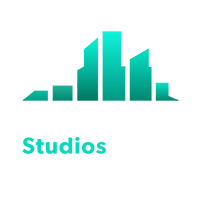
Understanding the WordPress Website Structure: Pages, Posts, Projects, Users, and More

by Shantelle Sebua
In today’s fast-paced digital landscape, staying ahead of design trends is essential for businesses looking to capture attention, foster engagement, and build credibility online. As we move through 2025 and beyond, web design continues to evolve—driven by new technologies, shifting user expectations, and an ever-growing emphasis on performance and accessibility. Here are the top five trends your business needs to know to ensure your website feels modern, purposeful, and user-centered.

1. Minimalist, Content-First Layouts
Simplicity is king, and modern web design embraces minimalism more than ever. Brands are moving towards designs that prioritize clear messaging and fast load times. Instead of overwhelming visitors with multiple calls-to-action or decorative elements, designers are opting for generous white space, bold typography that guides the eye, and single-column layouts that adapt seamlessly to mobile. By stripping away non-essential elements, minimalist designs keep visitors focused on your brand’s core value proposition, driving action—whether it’s making a purchase, subscribing, or booking a consultation.

Mobile-First and Adaptive Design
With mobile usage still outpacing desktop, responsive design is no longer optional—it’s foundational. Designers are going beyond simply resizing content to fit smaller screens. They’re crafting mobile-first experiences that prioritize vertical scrolling, thumb-friendly navigation, and lightning-fast performance.

AI-Powered Personalization
Websites are getting smarter. Artificial intelligence is now being used to deliver highly personalized experiences in real time. From smart search functions that suggest relevant results as users type, to dynamic content blocks tailored to individual behavior or preferences, AI helps reduce friction and deepen engagement.
Immersive Micro-Interactions
Micro-interactions—those small, subtle animations that respond to user behavior—are becoming more immersive and context-aware. Hover effects provide instant feedback, helping users identify clickable or active elements. Scroll-triggered animations reveal content gradually, making the browsing experience feel intuitive. Some designs incorporate interactive illustrations or 3D elements that respond to cursor movement or device orientation, adding sophistication and engagement. These thoughtful interactions not only enhance usability but also elevate the overall user experience.

Dark Mode & Inclusive Color Design
As dark mode continues to rise in popularity, more websites are offering toggle options to switch between light and dark themes. Color design is about more than aesthetics—it’s about accessibility. Creating high-contrast, WCAG-compliant color palettes ensures readability for all users. A well-balanced color scheme reflects your brand and makes your site more inclusive and user-friendly. Strategic use of accent colors draws attention to important elements like buttons or links without overwhelming the design.

Final Thoughts
The best websites combine clean, user-focused layouts with cutting-edge technology. By embracing minimalist structures, mobile-first strategies, AI-powered personalization, immersive micro-interactions, and accessible color schemes, your business can create a digital experience that’s both intuitive and innovative.
At Designscape Studios, we don’t just follow trends—we help you lead with them. Let’s build your future-ready website, designed to engage your audience and drive lasting results.
Want to Start a Website?
If you need help building a professional, high-performing website for your small business, reach out to us at Designscape Studios. We specialize in creating custom websites that enhance your brand and grow your business.
